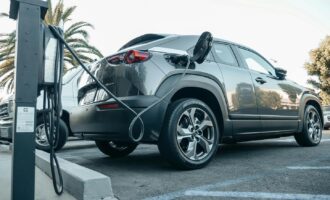
U.S. EPA unveils strictest pollution standards for cars, trucks and SUVs
The Environmental Protection Agency (EPA) yesterday announced the most stringent federal pollution standards to date for passenger cars, light-duty trucks, and medium-duty vehicles in the United States. The standards will phase in gradually over model years (MYs) 2027 through 2032.
EPA Administrator Michael S. Regan emphasized the importance of these standards in addressing climate change and improving air quality, stating, “With transportation as the largest source of U.S. climate emissions, these strongest-ever pollution standards for cars solidify America’s leadership in building a clean transportation future and creating good-paying American jobs, all while advancing President Biden’s historic climate agenda.”
The final rule is expected to slash passenger car pollution nearly in half from 2026 levels and reduce more than seven billion metric tons of carbon emissions, delivering nearly USD100 billion in annual net benefits, including significant savings in fuel costs for American drivers, according to the EPA.
The federal agency said that the final standards establish “technology-neutral, performance-based standards for cars, SUVs, light pickup trucks, and medium-duty large pickups and vans.”
EPA said it expects that manufacturers will choose to produce a diverse range of clean vehicles under the standards, including cleaner gasoline vehicles, hybrids (HEVs), and plug-in hybrid electric vehicles (PHEVs), and full battery electric vehicles (BEVs).
In 2023, 1.2 million electric vehicles were sold, a 46.3% increase from the previous year. However, as a percent of total new car sales, EVs only made up 7.6%. The new rule is targeting 35% to 56% for EVs in 2032, and 13% to 36% for plug-in hybrids.
The final standards called “Multi Pollutant Emissions Standards for Model Years 2027 and Later Light-Duty and Medium-Duty Vehicles,” build on EPA’s existing emissions standards for passenger cars and light trucks for model years 2023 through 2026. EPA is finalizing the same standard proposed for MY 2032 while allowing additional time for the auto sector to scale up clean vehicle manufacturing supply chains in the first three years covered by the rule.
The final standards are expected to save the average American driver approximately USD6,000 in reduced fuel and maintenance costs over the life of a vehicle. They also aim to provide greater certainty for the auto industry, catalyzing private investment and invigorating the U.S. auto sector for sustained growth.
The United Automobile Workers expressed support for the EPA’s approach, acknowledging the rule’s consideration for workers and communities and its potential to facilitate the adoption of a broad range of automotive technologies to reduce emissions.
This initiative is part of the broader Biden administration’s commitment to a cleaner transportation future, which includes building a national network of EV chargers, ensuring domestic access to critical minerals for EV batteries, and funding clean transit and school buses with a focus on underserved communities.
The light-duty vehicle standards apply to passenger cars, light trucks, and heavier vehicles designed primarily for the transportation of people, consistent with previous EPA criteria pollutant and greenhouse gas standards. The medium-duty vehicle (MDV) category includes heavy-duty Class 2b and 3 vehicles (vehicles with a gross vehicle weight rating (GVWR) of between 8,501 and 14,000 pounds). Class 4 and higher vehicles remain under EPA’s heavy-duty vehicle program. The MDV category primarily includes large pickups and vans that are typically used for work due to their higher towing and hauling capabilities compared to light-duty vehicles.
EPA is finalizing tighter tailpipe limits for both light-duty vehicles and medium-duty vehicles. These standards phase in over a six-year period from MY 2027 through MY 2032. For light-duty vehicles, the standards are projected to result in an industry-wide average target for the light-duty fleet of 85 grams/mile (g/mile) of CO2 in MY 2032, representing a nearly 50% reduction in projected fleet average emissions target levels relative to the existing MY 2026 standards.
For medium-duty vehicles, EPA is revising the existing standards for MY 2027 and establishing new standards for MYs 2028-2032, given the increased feasibility of GHG emissions-reducing technologies in this sector in this time frame. These standards phase in over a six-year period from MY 2027 through MY 2032. When fully phased in, the MDV standards are projected to result in an average target of 274 g/mile of CO2 by MY 2032, representing a 44% reduction in projected fleet average emissions target levels relative to the existing MY 2026 standards.
For more information about the final rule, visit the EPA website.









